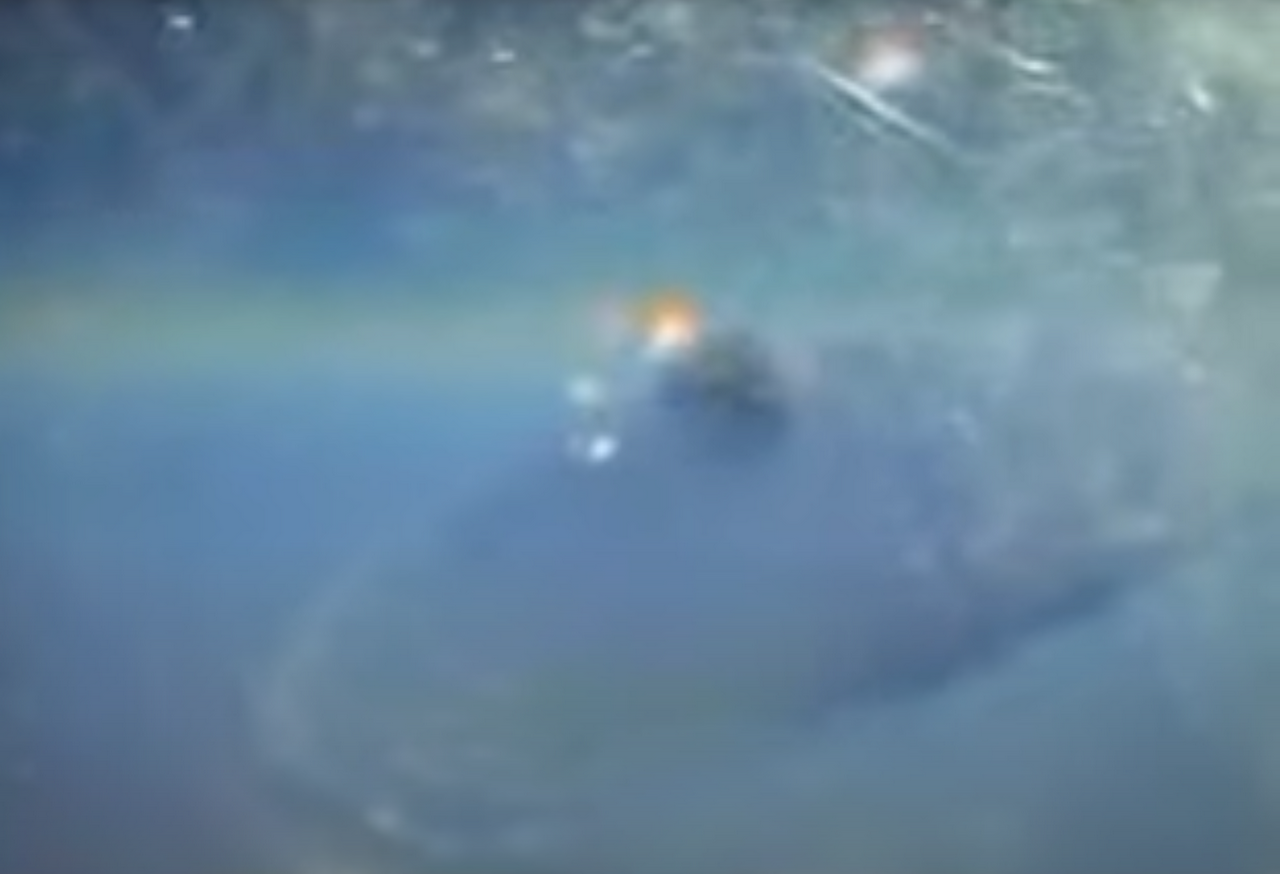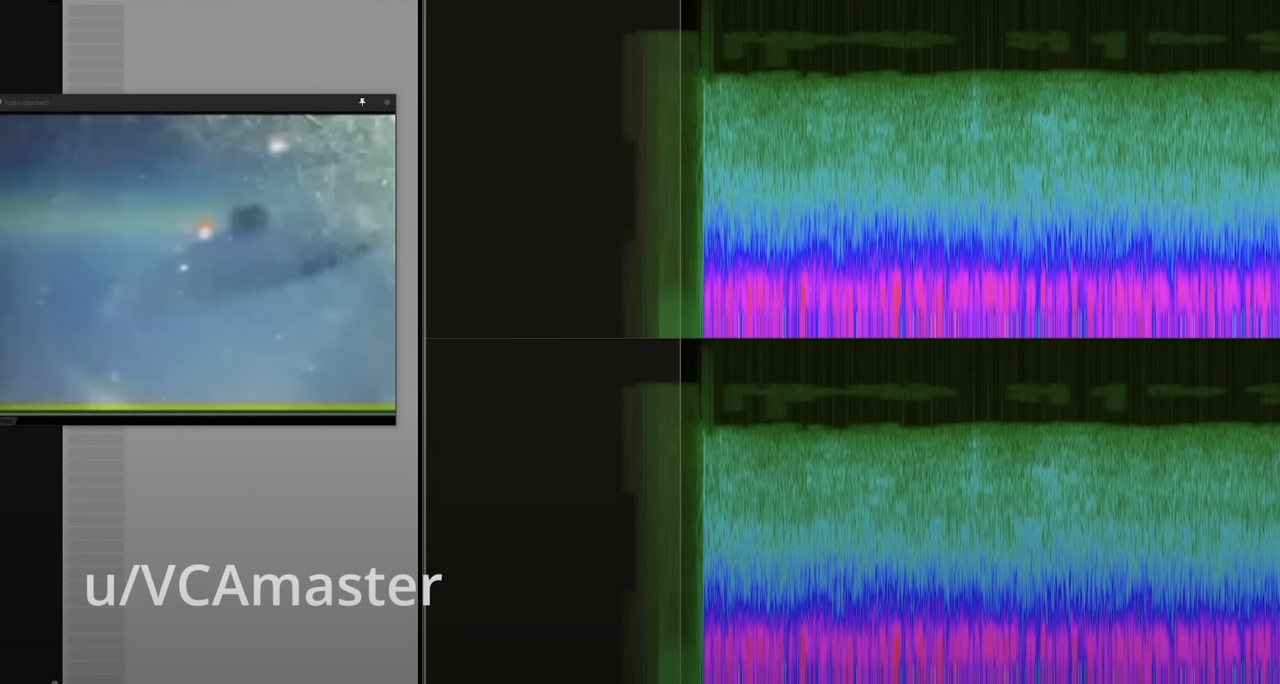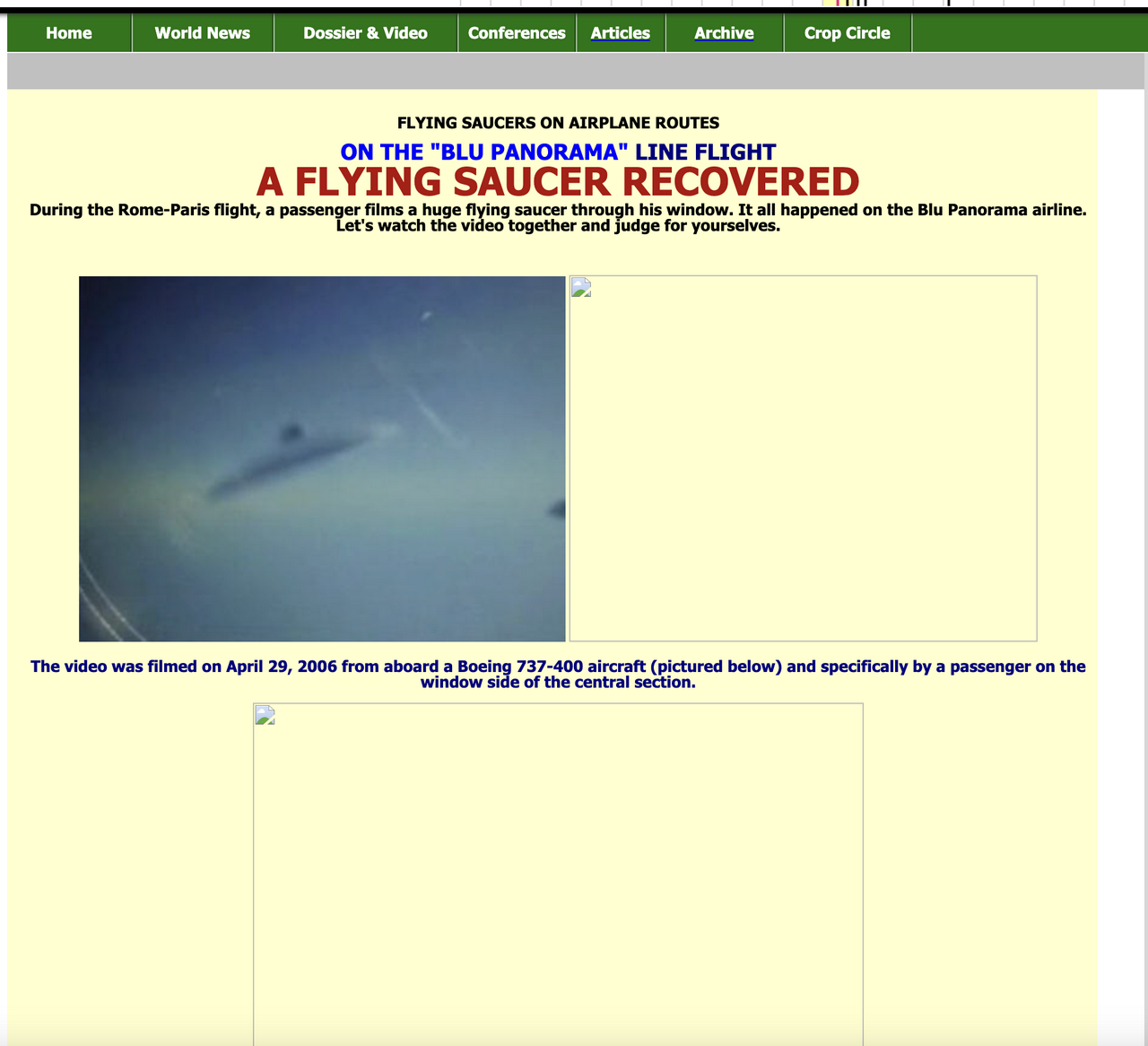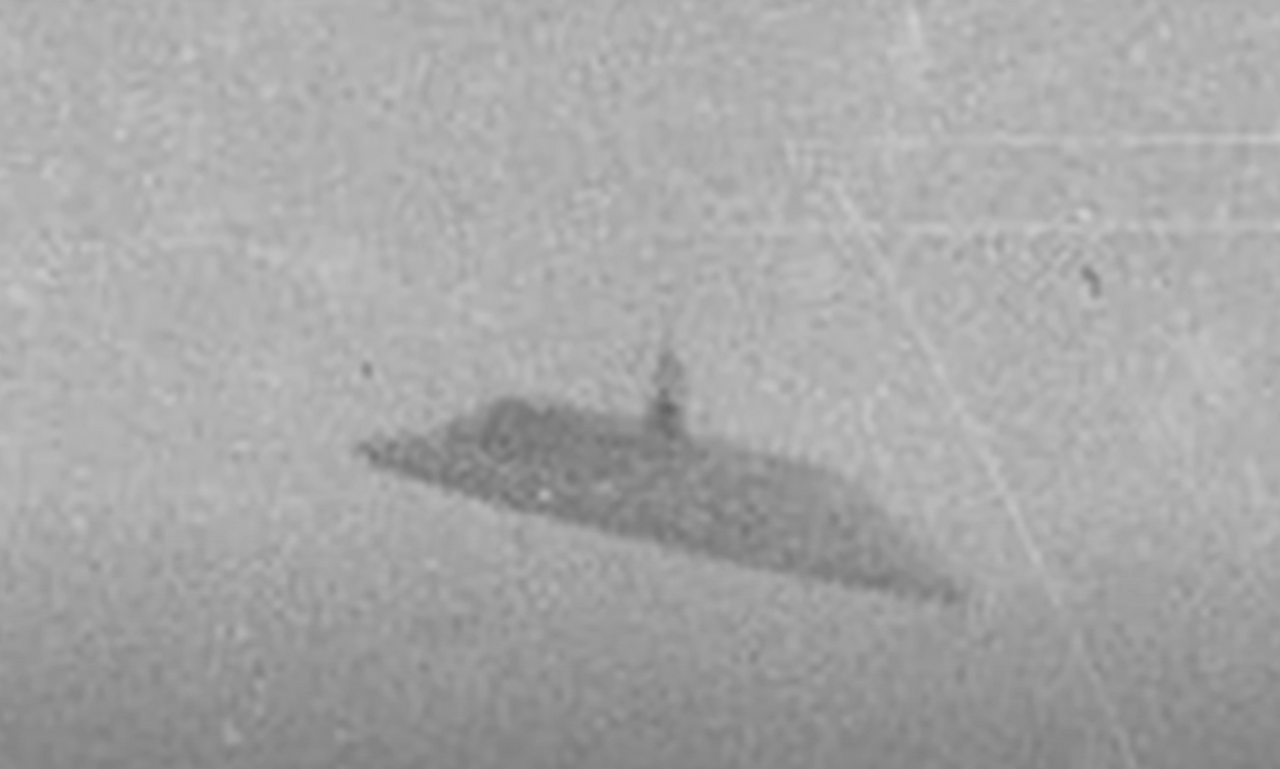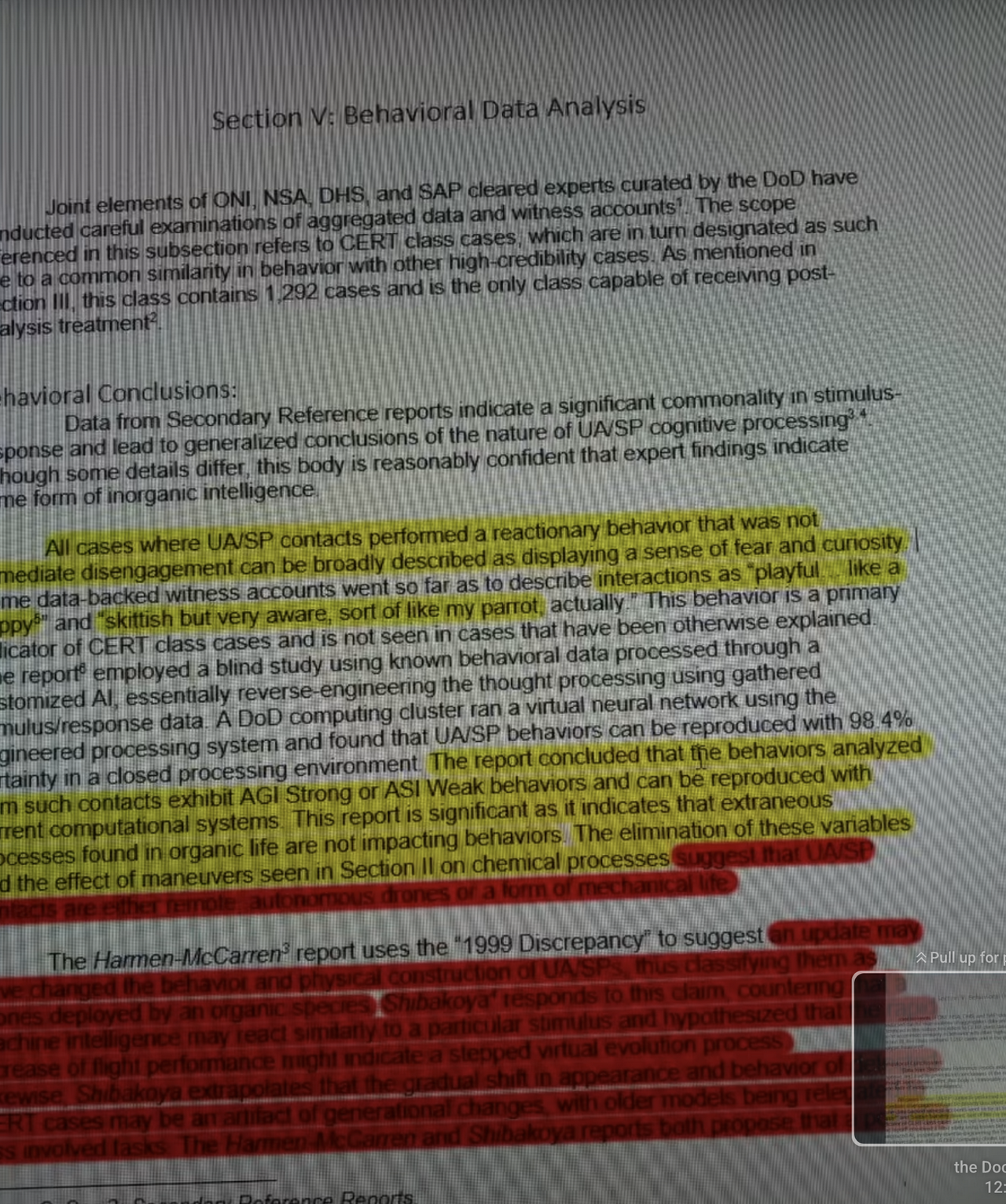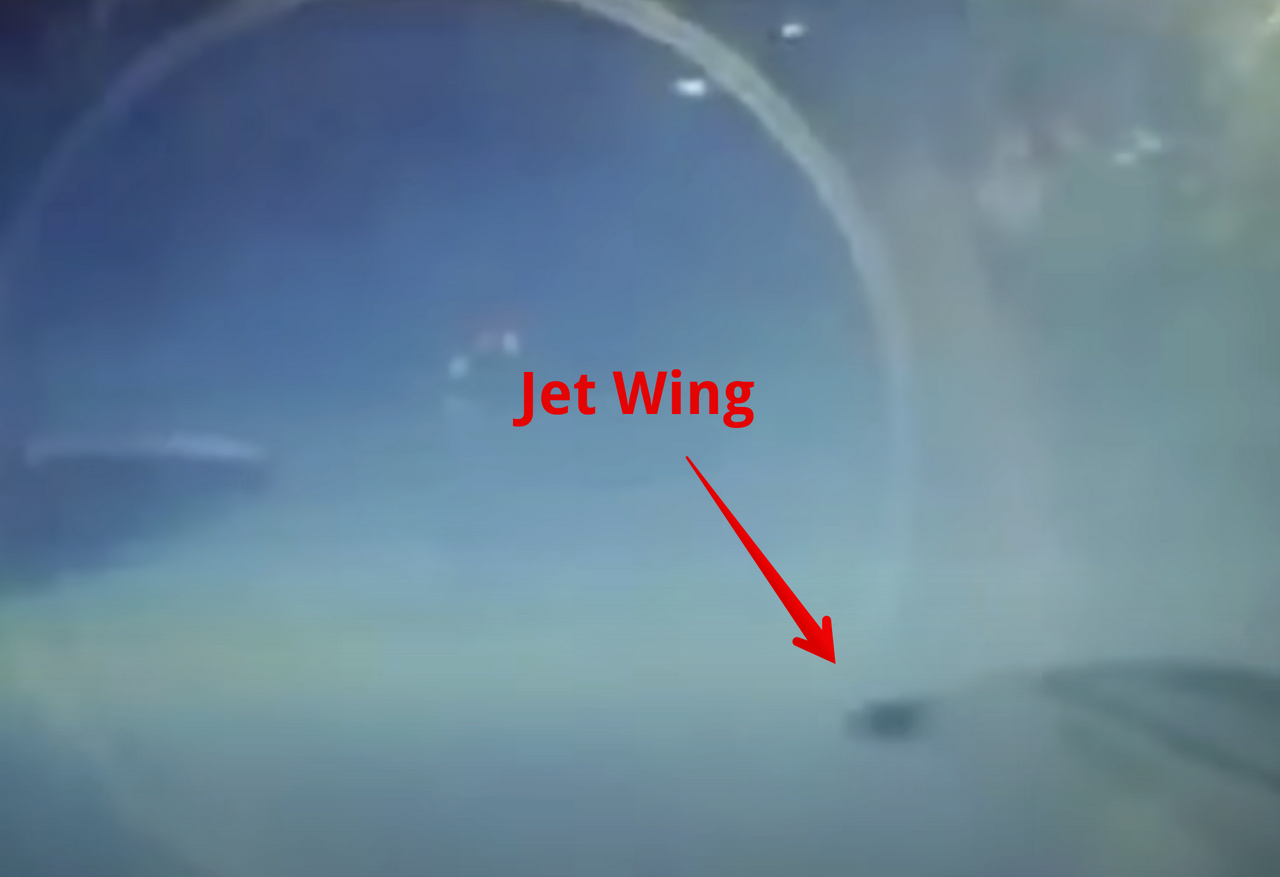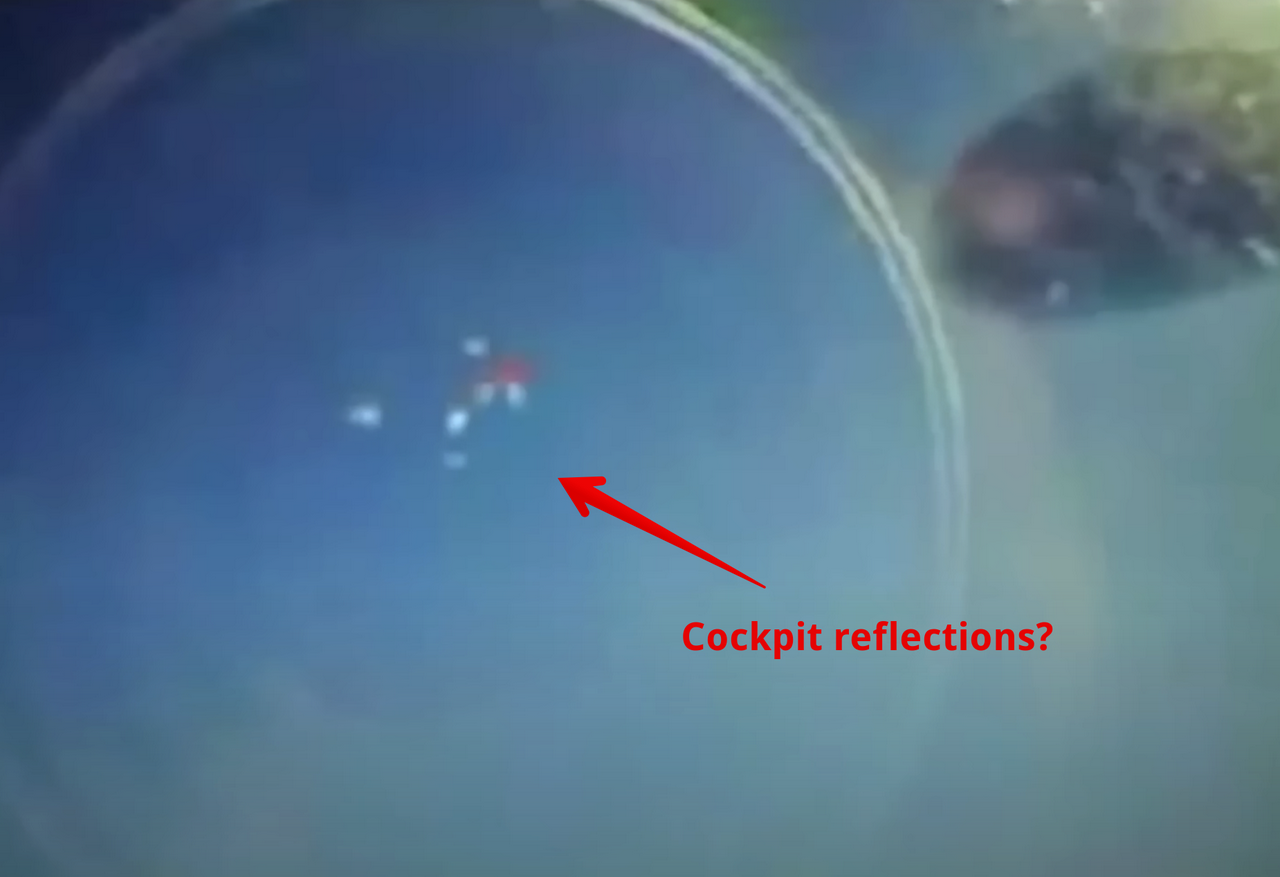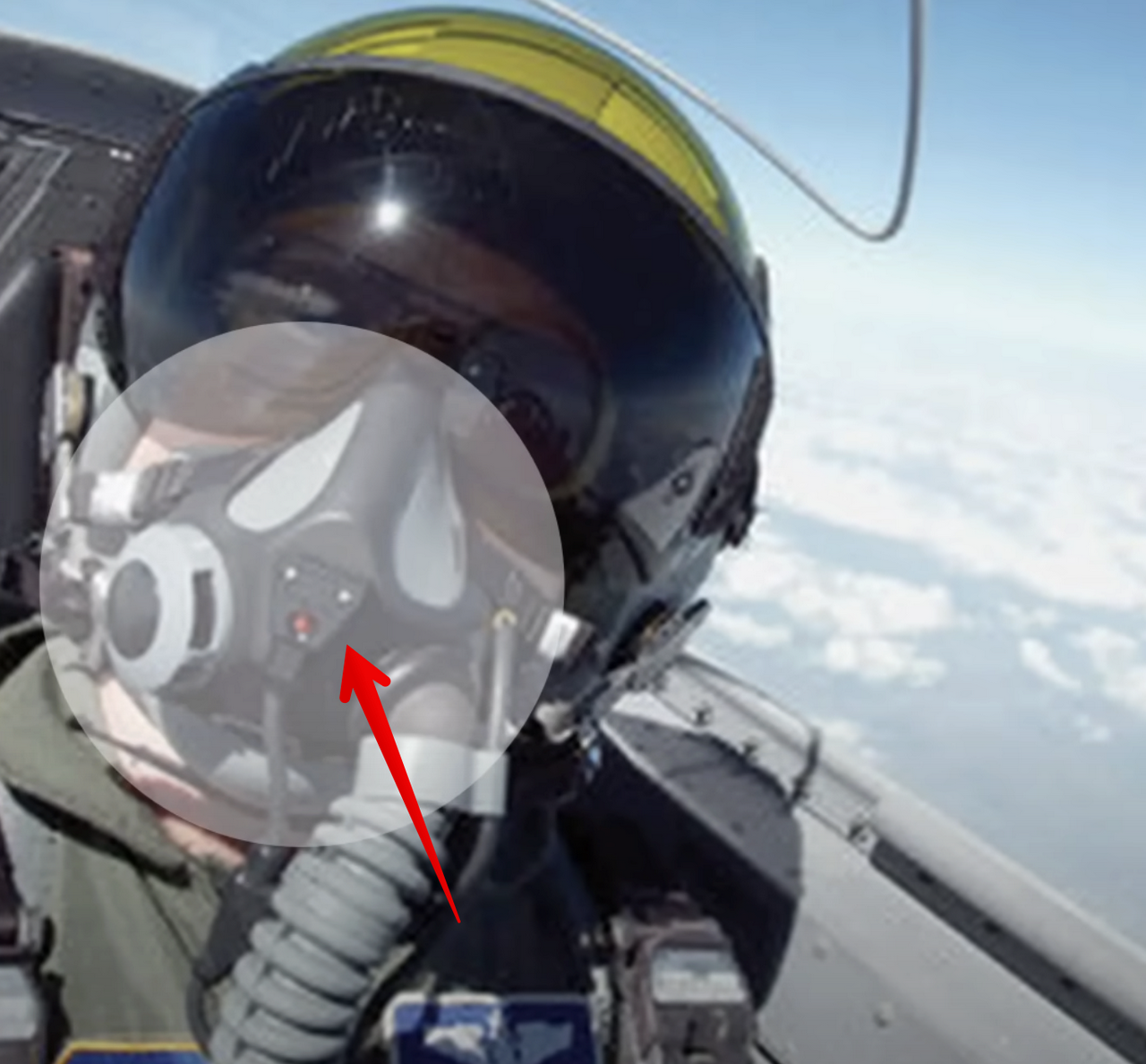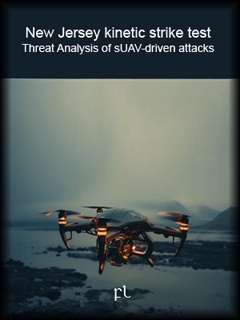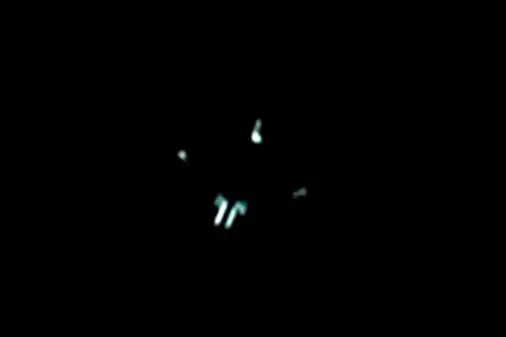Carlos Díaz: The UFO with the Glowing Molten Skin

The first encounter was early on the morning of January 23, 1981, photographer Carlos Díaz was parked on a ridge in Ajusco, just outside Mexico City.
The air was cold and thin, and mist rolled slowly over the trees below. He was waiting to meet a journalist for a story he’d been hired to shoot, his camera gear laid out on the passenger seat.
Then suddenly, he sees a bright light spread across the valley.
At first he thought it was a fire. Then the light began to move, swelling and flickering like molten metal. That was the moment his life took a very strange turn.

Díaz quickly reached for his camera and began capturing the series of photos that would later make him famous.
The object seemed to rise out of the valley and drift closer, glowing in a deep amber color that lit up the trees around him. He said the car began to shake. When he stepped outside, the object hovered for a few seconds before shooting straight up and disappearing.
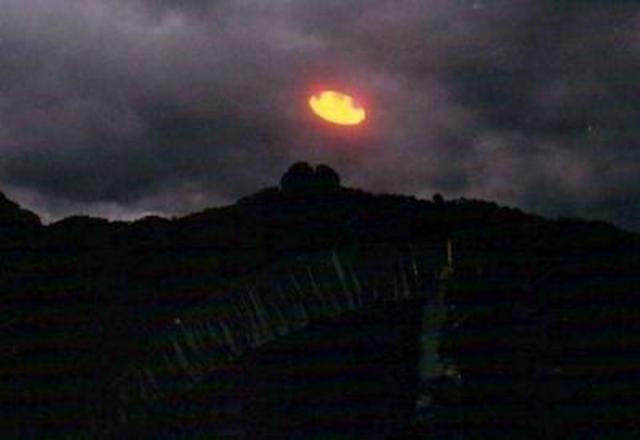
That first sighting left him rattled but fascinated. Over the next few weeks, he couldn’t stop thinking about it.
Díaz Returns to Ajusco
Over the months that followed his first encounter, Díaz claimed he returned to the hills near Ajusco again and again, drawn by a mix of curiosity and obsession. Each visit, he said, brought new sightings of what appeared to be the same luminous craft, sometimes hovering low over the treeline, sometimes rising quietly into the mist.

In these later encounters, the light no longer appeared as a simple glowing sphere. He described a distinct structure—something tangible and engineered. The craft, he said, had a domed top, a smooth ring encircling its middle, and smaller rounded shapes across its surface that looked like glass bubbles catching the light. Standing alone in the clearing, he watched it drift silently above him, its surface pulsing with a molten glow.
“invited” Aboard The Craft
This is where the story starts to get a lot stranger, and where most skeptics tend to bow out.
Years later, Díaz said he went back to the same ridge in Ajusco where he had first photographed the glowing craft. He claimed he felt a strong pull to return, as if something was waiting for him there. Standing beside his car, he noticed a familiar orange light rising once again above the trees.

Then, he said, something touched his shoulder and everything went black. When he came to, night had fallen and the forest was drenched from rain, yet his clothes were completely dry. By a nearby car stood a tall, pale-skinned blond man who told him he had already been inside the craft and that his memories would return in time.
Unlike classic abduction stories told by witnesses such as Whitley Strieber or Betty and Barney Hill, Díaz never described being taken by force. He portrayed his experiences as voluntary contact, a kind of invitation rather than an abduction. According to interviews he gave in the early 1990s, including one with OMNI magazine and later conversations with Jaime Maussan, he claimed that in 1989, several years after his first sightings, he was “invited” aboard one of the craft during a close encounter in the same Ajusco area.
Inside, he said, the craft was filled with organic light and pulsating structures, warm and alive rather than metallic or mechanical. The beings he encountered, he said, communicated messages about Earth’s ecology and humanity’s role in preserving it, rather than performing any kind of medical or experimental procedures.
In later years, Díaz spoke of vivid visions such as glowing orbs, crystal caverns, and journeys through light itself that blurred the line between physical contact and spiritual experience. His encounters, as he told them, were less about captivity and more about transformation.
The Documentary
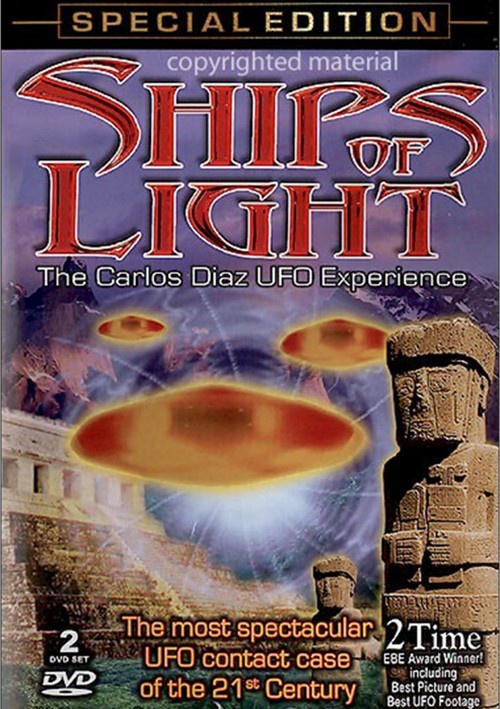
By the early 1990s, the photos appeared in the press and in Ships of Light: The Carlos Díaz UFO Experience, produced by German researcher Michael Hesemann.
Supporters said the original slides were analyzed by Professor Víctor Quesada at Mexico’s Polytechnic Institute, who supposedly found no sign of tampering and said the light spectrum didn’t match any known source. The same claim has been repeated about NASA analyst Robert Nathan and image specialist Jim Dilettoso, though no full reports or verifiable records have ever been made public.

There was also talk of video.
One clip in particular is often mentioned: Díaz pointing a flashlight toward a hovering craft, which then shines a beam of light back down before vanishing. That scene appears in several YouTube uploads and UFO documentaries, but no one has ever produced the original tape with full metadata or proof of chain of custody.

Believers and Skeptics
Hesemann became one of Díaz’s strongest defenders and spent years traveling to Mexico to document the case. He described the photos as some of the best evidence of contact ever recorded. Harvard psychiatrist John Mack, who studied alleged abduction cases, also met Díaz and said he came across as calm, sincere, and deeply affected by what he’d experienced — a view quoted in the UFO Evidence archive.
Critics weren’t convinced. Researcher Bill Hamilton, who viewed the footage at Jim Dilettoso’s Village Labs, wrote that “the object descends in jerky motion as if suspended by a cable.” His comments appeared in Rense’s skeptical archive, where other analysts argued the lighting looked artificial and the craft behaved like a small, controlled model.
Hesemann rejected that view, saying the lighting and motion matched “plasma-type” energy rather than anything mechanical, comparing it to the so-called “falling-leaf” movement reported in other UFO cases. Neither side proved the other wrong, and the argument continues decades later.
Meanwhile, the nearby town of Tepoztlán began gaining attention for its own reports of glowing discs. Mexican journalist Jaime Maussan featured many of these stories on television and linked them to Díaz’s experiences. No official radar or aviation reports from 1981 confirm the sightings, but the overlap helped turn the story into a nationwide phenomenon.
Why It Could Be Fake
A lot of the criticism around the Carlos Díaz case comes down to how the craft looks. The glowing, honey-colored surface he photographed over and over has an uncanny resemblance to the glass lamps made by local artisans in Tepoztlán, the same town where he lived. When lit from the inside, those lamps give off a molten amber glow and a rippling texture that looks almost identical to what’s in his photos. Some people believe he might have photographed one of these up close and slightly out of focus to make it look like something floating in the sky.

The movement in the videos also doesn’t feel right. When slowed down, the light doesn’t move like a craft that’s flying on its own. It sways and dips, more like something hanging from a string or being lowered by hand. The brightness never changes much, which makes it seem more like a static light source than something that’s radiating energy or heat.
There’s also the question of access. Díaz has shown his photos and videos at conferences for years, but he’s never shared the original negatives or full tapes for open scientific analysis. Every review of the material has been limited to what he allowed. That, combined with his later stories about being invited aboard the craft and meeting glowing, human-like beings, makes the whole thing sound less like documentation and more like belief.
No independent witnesses have ever captured the same object, and there’s no radar or flight data backing up any of the sightings. For many, that’s enough to conclude the entire thing was staged using light, glass, and clever camera work.
Why It Might Be Real
The reason people keep coming back to the Díaz case is because the footage looks incredible. Even decades later, the photos hold up. The lighting is consistent, the reflections match the terrain, and the object seems to have depth and structure. It doesn’t look like a small prop shot in a dark room.
His early photos were taken on film, long before digital editing or easy photo manipulation. Some experts who studied the negatives in the 1990s didn’t find signs of trickery or double exposure. The way the light interacts with the environment seems too natural for a simple staged scene.
Díaz himself also never fit the profile of a hoaxer. He didn’t make money from the story or try to sell it to tabloids. People who’ve met him say he came across as sincere and grounded, genuinely convinced by what he experienced. He always described it as ongoing contact, not an abduction or a one-time event, which makes his story feel more personal than theatrical.
So while skeptics see a clever illusion, others see one of the most striking and sincere visual records in UFO history. And that tension, between skepticism and possibility, is what keeps the Carlos Díaz story alive.
The Evidence Trail
By the mid-1980s the images were shown at small UFO gatherings in Mexico City, where Jaime Maussan (yeah, the alien mummy guy...) began following the story.
Around 1988 the photos reached Europe, and Michael Hesemann flew to Mexico after seeing them. He filmed interviews and location footage in Tepoztlán, which later appeared in Ships of Light.

In 1991 Díaz began filming with a VHS camera and captured a luminous craft near his home.
Maussan obtained a copy that aired on Mexican television, making Díaz’s footage widely known. That same year came the “flashlight incident,” though no one has ever confirmed an original first-generation tape.
Between 1993 and 1994 the slides were said to have been tested by Víctor Quesada in Mexico and by analysts in the United States, including Robert Nathan and Jim Dilettoso. Their findings were never formally published but were often summarized as “no sign of trick photography.”
In 1995 Ships of Light premiered on TV, then spread internationally on VHS. Its imagery of glowing discs drifting over Mexico turned the case into a touchstone of 1990s UFO media.
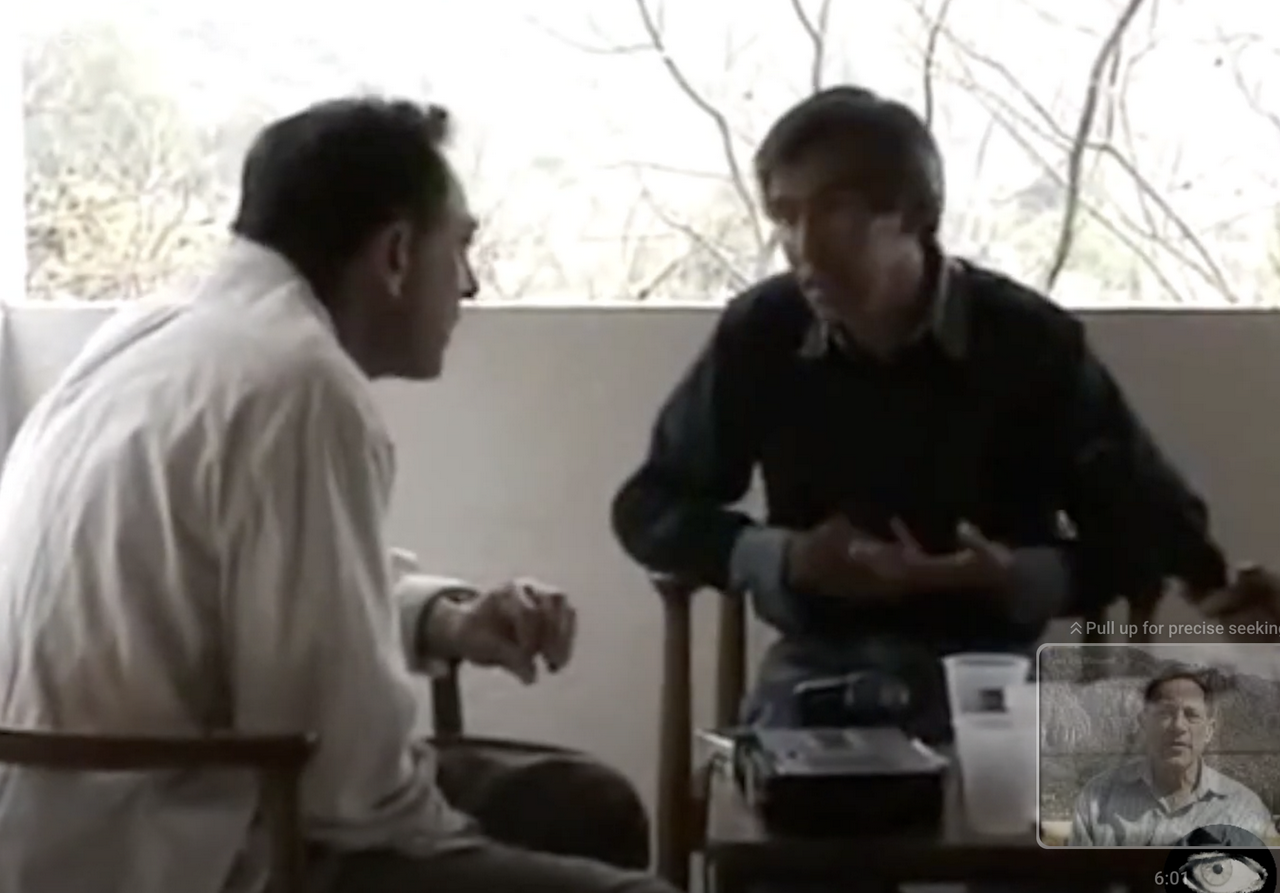
By the late 1990s Harvard’s John Mack had visited and interviewed Díaz, and called him “spiritually grounded and sincere,” while skeptics like Bill Hamilton continued to argue the videos showed a hanging model. The debate carried into early internet forums through the 2000s.
Watch the interview here.
As YouTube and blogs spread, the old VHS footage was digitized and re-shared countless times, each copy losing detail but gaining reach. Díaz appeared occasionally at conferences but eventually stepped away from the spotlight, living quietly in Tepoztlán.
Despite the lack of new evidence, the legend kept growing. Writers translated the story into multiple languages and connected it with environmental or prophetic themes that echoed Díaz’s own interviews.
The Story Refuses to Fade
What keeps the Carlos Díaz story alive isn’t just what he said happened but what was captured.
His photos don’t show a distant light in the sky; they show something radiant and strange, something that looks half machine and half alive. Even people who think the case was faked admit the images are beautiful.
To believers, Díaz’s experiences are about communication with something greater — an encounter that left him with a message about caring for the Earth. To skeptics, it’s a perfect example of how talent and imagination can turn an illusion into a legend.
Either way, the images still pull people in. More than forty years later, they haven’t lost their hold.
Where the Trail Ends
Almost every version of the footage today traces back to the same few VHS tapes from the 1990s. The original film stock and negatives have never been archived, and no verified technical report has surfaced. The photos that once stunned audiences remain visually striking but scientifically unresolved.
Maybe that’s why the story lasts. The Ships of Light may not have proven anything, but they became their own kind of truth — a reminder that even when evidence fades, wonder sometimes fills the space it leaves behind.
Whether the Ships of Light were something real or something we still don’t fully understand, the story of Carlos Díaz has a special place in UFO history. His photos stand out from almost anything else I’ve come across with that molten texture, the warm amber glow, the strange feeling that whatever he captured was alive in some way. If they’re fake, then whoever made them pulled off one of the most convincing UFO hoaxes ever caught on camera..
Every era of UFO research has a case that resonates more through feeling than evidence, and for me, this is one of them.
